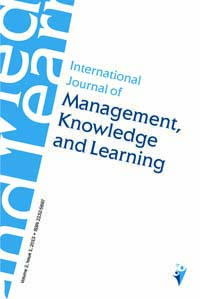Social Network Analysis of College Student Group Selection: Case Study
Social Network Analysis of College Student Group Selection: Case Study
Author(s): Wasinee NoonpakdeeSubject(s): Higher Education , Social Informatics, ICT Information and Communications Technologies
Published by: Mednarodna fakulteta za družbene in poslovne študije
Keywords: Analysis of social networks; college students; effective teaching planning; IT knowledge; learning environment; increasing opportunities for innovation;
Summary/Abstract: Purpose: This research aims to analyse the social network of college student group selection to understand students' relationships and behaviour for effective teaching planning, group work assignments, and individual student management. Study design/methodology/approach: The samples are college students who study a master degree program in digital innovation and take course IO-001(business intelligence and data analytics) or IO-002 (cybersecurity). Data were collected using the questionnaire asking the college students for their 1st and 2nd choices of classmates who want to be in the same group. For data analysis, Gephi, open-source software, is used for social network analysis (SNA) and graph visualisation. Findings: According to the results, the most desirable students to work with and the least desirable students to work with are defined. The instructors can appoint the student who is the most desirable to work with into a position of influence to facilitate learning in the classroom to motivate inspiration during the study. For those students who the least desirable to work with, the instructors might make them gain more attention, including giving them some roles or let them have more identity. According to SNA, the least desirable students to work with have low IT background for both courses IO-001 and IO-002. Therefore, IT background might be one of the factors that influence student group selection. The instructors might provide additional courses to enhance IT skills for those students who have low IT backgrounds. Moreover, the instructors might assign the influent students to work with the least desirable students to make a better relationship. Originality/value: The results of this study can be used as a guideline in the formulation of teaching and learning courses, including setting the learning style to make each student more connected and to encourage each group of students to interact more with each other. The instructors can promote a learning environment to increase opportunities for innovation.
Journal: International Journal of Management, Knowledge and Learning
- Issue Year: 10/2021
- Issue No: 1
- Page Range: 149-155
- Page Count: 7
- Language: English

